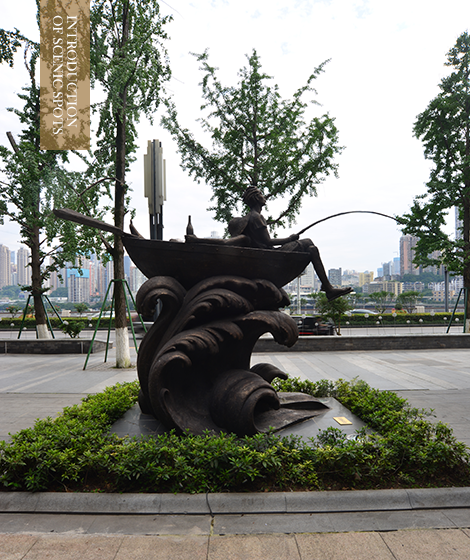
fishing in Jialing River
The two rivers of Chongqing, the Yangtze River and Jialing River, join at Chongqing creating the unique landscape of the mountain city. The formation of Jialing River, one of the two rivers, has a very long history.
Jialing River is a tributary of the upper reaches of the Yangtze River. The river flows through Jialing Valley in the northeast of Feng County of Shaanxi, hence the name “Jialing River.”
Jialing River is a tributary of the upper reaches of the Yangtze River. The river flows through Jialing Valley in the northeast of Feng County of Shaanxi, hence the name “Jialing River.”
The river originates from Daiwang Mountain, Feng County of Shaanxi which is at the northern foot of Qinling Mountains. The main stream of the river flows through Shaanxi, Gansu, Sichuan and Chongqing and flows into the Yangtze River at Chaotianmen of Chongqing.
With a length of 1345km, mainstream drainage area of 39,200 square kilometers and total drainage area of 160,000 square kilometers, the river has the largest drainage area among all the tributaries of the Yangtze River. It’s second only to Yalong River in length and second only to Minjiang River in flow rate.
The section of Jialing River which flows through the city proper of Chongqing was called “Yu River” in ancient times, hence the abbreviated form of the name of Chongqing is “Yu.” The rivers flows through Hechuan District and joins Qu River and Fujiang River (river mouth is within the territory of Chongqing.
It joins Heishuitan River and Hou River in Beibei District and then runs through Yubei District and Jiangbei District before flowing into the Yangtze River at Chaotianmen of Yuzhong District.
As the mother river of Chongqing, Jialing River, or “Yu River”, has nourished people living on this land of Yu over the past thousand years.
As the mother river of Chongqing, Jialing River, or “Yu River”, has nourished people living on this land of Yu over the past thousand years.
As a river running through many provinces and cities, Jialing River has witnessed the evolution of humanistic history of this place as well as the vicissitudes of time.
Most people of Chongqing built their residence near water or on the slope of hills creating the distinctive pile dwelling architectural culture of Chongqing. Living near water and being close to water was one integral part of everyday life of Chongqing people, a demonstration of the unique humanistic landscape of Chongqing where man and nature coexist in harmony.
